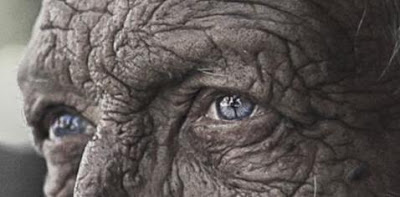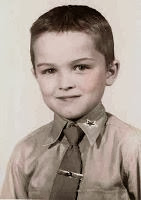How much can one say about purple? The person who chose this topic told me that he had something quite special in mind. I don’t. So, I guess I will have to settle with simply commenting upon a few situations involving the color purple which I have observed over the years.
To start off with, I’ll be blunt and succinct about this first example just to get it out of the way.
Unfortunately (and I will not dwell on these points, either), purple often can be an indication of some serious medical crisis. I recall seeing a very elderly, fragile man whose lips were a scary dark purple, almost black. Of course, we all are familiar with the ominous purple lesions too often seen on people of our generation, Kaposi’s sarcoma, the infection with human herpesvirus that often has been associated with AIDS. And, if you permit me to quickly mention it, I never will erase from my memory seeing the faint streaks of purple as I watched my partner die from lung-cancer. Enough of that, however.
Moving on, some people claim that certain ethnic cultures prefer various colors. I recall early in my education, I worked one summer for an architect, my entertaining the idea that I might choose architecture as a profession. The firm, at that time, was drawing up plans for some low-income housing, most of the residents predicted to be blacks. One architect stated that a major color theme for the interior would be the color purple “because blacks like the color purple.” His comment struck me as an over-generalization, although I do recall seeing groups of blacks elegantly dressed in their Sunday finest at Black Eyed Pea. Often, their suit-coats and fancy dresses were in various shades of purple.
The school color for South High School is purple, a color most prominently displayed on football outfits. Unlike the 1950s or 60s, I never see, these days, students wearing school jackets or shirts sporting the color purple. I have seen some girls, however, with purple hair.
I also know someone who claims the color of his vehicle, known as a “Cube,” is burgundy, although it looks more like a dark purple to me. I have to look carefully in the sunlight to conclude that, however.
Here, I have another opportunity to use one of my favorite phrases, “bloviating ignoramus.” I had no desire ever to watch Rush Limbaugh on TV, although I occasionally have stumbled upon some clips on the news. I recall seeing Rush so fired up and blustering with some false accusation he wished to spread about someone whom he hates that, I swear, his face seemed to be turning purple. Somehow, he appears to have avoided a heart attack or stroke.
I have witnessed that purple-faced phenomenon first-hand, too, with a local intellectual-Neanderthal whom I refer to as “Neanderthal-Joe.” Back in the early days of the Bush junta and the U.S. invasion of Iraq, I casually mentioned to Joe that I was disappointed with Bush. Joe stood up, starting screaming at me, stomping around the room, slathering at the lips. He retorted that “Bush is doing God’s work!” His face literally was turning purple.
That happened also with a mutual acquaintance and good friend of Joe, a man who quickly had become a millionaire working for the sleaziest mortgage-banking company in America. When the Colorado Supreme Court declared Amendment 2, which in effect denied civil rights to gays, was unconstitutional, this man was infuriated, stating to me that, “Nine unelected men in black robes denied the will of the people.” I “pushed his button” by replying, “When I was in grade school, we were taught that America is a constitutional democracy.” At that, he exploded, sputtering and shouting. His face was a slightly different shade of purple from Joe’s.
Last of all, and on a more positive side, there also are some purple things that give me great pleasure. I have enjoyed seeing nature’s paintbrush at work with purple flowers, sunsets, Purple Martin birds, and bushes of wild berries, so dark that they look almost black. And, who can resist a heaping helping of homemade berry cobbler? Now, there’s something purple that is enjoyable to think about.
© 8 January 2016
About the Author
I have had a life-long fascination with people and their life stories. I also realize that, although my own life has not brought me particular fame or fortune, I too have had some noteworthy experiences and, at times, unusual ones. Since I joined this Story Time group, I have derived pleasure and satisfaction participating in the group. I do put some thought and effort into my stories, and I hope that you find them interesting.







